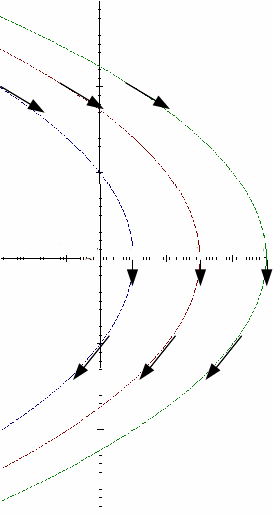The motion of a dynamical system traces out a curve in phase space called a phase curve. For an autonomous system there is only one phase curve through each point, given by![]() – with
– with![]() and
and![]() denoting the initial conditions. Another solution
denoting the initial conditions. Another solution![]() represents the same curve in phase space differently parametrized.
represents the same curve in phase space differently parametrized.
For any autonomous system we may define for each![]() a transformation of the phase space
a transformation of the phase space![]() by
by![]()
Theorem
The phase flow![]() satisfies
satisfies![]()
Proof: For any solution![]() is also a solution where
is also a solution where![]() is any number.
is any number.
![]()
In terms of flows this means![]()
For second order systems we may sketch the the phase diagram in the plane. It is impossible to draw all the phase curves but usually only a representative sample are required. The solution![]() is rarely in closed form, so qualitative methods are required. Often we can find the direction field from the unsolved system and plot them in the plane, joining up the arrows so that the phase curves are continuous.
is rarely in closed form, so qualitative methods are required. Often we can find the direction field from the unsolved system and plot them in the plane, joining up the arrows so that the phase curves are continuous.
Example:![]() The y component of velocity is always negative, while the
The y component of velocity is always negative, while the![]() - component increases in magnitude with distance from the
- component increases in magnitude with distance from the![]() – axis, is positive in the top half of the plane and negative below it.
– axis, is positive in the top half of the plane and negative below it.

